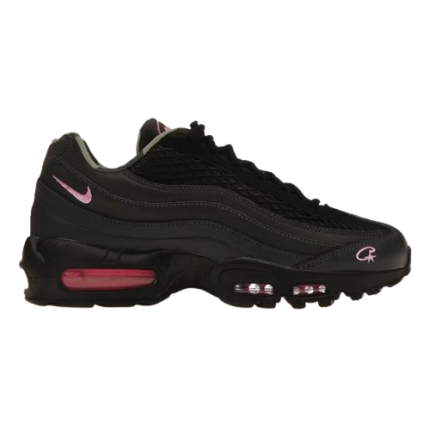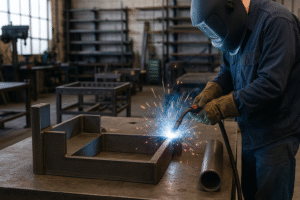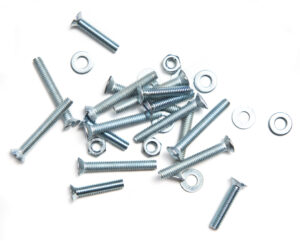Nike Air Max 95 vs Air Max 90: A Tale of Two Icons
When talking about the most iconic sneakers in Nike’s history, the Air Max 90 and Air Max 95 immediately come...

When talking about the most iconic sneakers in Nike’s history, the Air Max 90 and Air Max 95 immediately come to mind. Both shoes have left an indelible mark on sneaker culture, fashion, and sportswear innovation. While they share the Air Max name, each model brings its own flavor to the table in terms of design, comfort, performance, and cultural impact. Whether you’re a seasoned sneakerhead or just getting into the game, understanding the differences—and similarities—between the Air Max 95 and Air Max 90 helps you appreciate why these models have stood the test of time.
Design Philosophy: Bold vs. Sleek
The Air Max 90, originally released in 1990 and designed by the legendary Tinker Hatfield, was a revolutionary silhouette at the time. Its design emphasized speed and sportiness, highlighted by its streamlined shape and visible Air cushioning unit. The shoe’s original “Infrared” colorway remains one of the most recognizable in sneaker history, giving the 90 an unmistakable identity. With sharp paneling, layered upper construction, and a visible heel unit, the AM90 became a visual staple for runners and streetwear lovers alike.
On the other hand, the Air Max 95, introduced five years later and designed by Sergio Lozano, was more radical in its design approach. Taking inspiration from the human anatomy, the AM95 features layered panels that represent muscle fibers and rib structures. The gradient color fades, combined with speed-lacing systems and reflective detailing, made it a futuristic, even polarizing design when it debuted. It also became the first Air Max to introduce visible Air in the forefoot as well as the heel, pushing the limits of Nike’s cushioning technology.
Comfort and Performance
While both sneakers were initially designed for running, their comfort levels differ slightly due to advances in technology and design choices.
The Air Max 90 offers a plush feel, especially in the heel area, making it great for casual, all-day wear. Its midsole includes polyurethane and encapsulated Air-Sole units that provide a comfortable ride. However, since it’s an older design, the forefoot cushioning is relatively minimal by today’s standards.
The Air Max 95, being a more advanced runner of its time, features Air units in both the heel and forefoot. This dual-cushioning setup creates a more responsive and balanced feel underfoot. The 95 hugs the foot a bit more snugly and supports more aggressive walking or running. If you’re looking for support and modern comfort with a retro vibe, the Air Max 95 might edge out the 90 in performance.
Cultural Impact
The Air Max 90 has been a timeless staple in streetwear, often associated with skate culture, music, and everyday style. Its clean shape and ability to take on countless colorways and collaborations (like with Off-White, Patta, and DQM) have made it one of Nike’s most versatile silhouettes. Whether you’re wearing jeans, joggers, or shorts, the 90 fits right in.
In contrast, the Air Max 95 has had a deeper cultural connection in urban communities, particularly in the UK and parts of the U.S. Known as the “110s” in Britain (due to their original £110 price tag), the AM95 became a street icon. It symbolized status, edge, and rebellion, often worn by grime artists and underground fashion heads. The layered, aggressive look gave the 95 a tougher presence compared to the sleeker 90.
Style and Versatility
The Air Max 90 leans more toward minimalist versatility. It pairs well with various outfits and looks clean whether in all-white, neon, or patterned editions. Its more modest silhouette makes it easier to style for both men and women, which is why it often gets reimagined in women’s exclusive designs.
The Air Max 95 is chunkier, louder, and a statement piece on its own. If you’re looking to turn heads, the 95’s sculpted upper and gradient tones make for a bolder fashion choice. It tends to work best in streetwear outfits—think oversized tees, cargo pants, and bomber jackets.
Modern Revivals and Collaborations
Both models have seen countless re-releases and modern reinterpretations. The Air Max 90 celebrated its 30th anniversary in 2020 with the return of the OG “Infrared” and special collaborations, like the one with The Basement (a UK-based streetwear collective) that introduced city-themed designs.
The Air Max 95 has also been part of high-profile collabs. The Comme des Garçons x Nike Air Max 95, for instance, gave the silhouette a fashion-forward spin. In addition, reissues of classics like the “Neon” colorway keep the 95 relevant in today’s market.
Which One Should You Choose?
If you’re going for a more classic, all-around wearable sneaker, the Air Max 90 is a fantastic choice. Its sleek design, broad color options, and everyday comfort make it a must-have for any collection.
But if you prefer something more distinct and aggressive, with added support and bold aesthetics, the Air Max 95 is your go-to. It’s the kind of shoe that makes a statement and gives off serious ‘90s energy.
Conclusion: Legends in Their Own Right
Whether you prefer the clean and classic appeal of the Air Max 90 or the anatomical, futuristic vibes of the Air Max 95, there’s no wrong choice. Both models represent different eras of Nike innovation and have carved out their own spaces in sneaker history. For many sneaker lovers, owning both is the ultimate solution—because when it comes to Air Max, it’s not always about choosing one over the other. It’s about appreciating the legacy they’ve built together.







